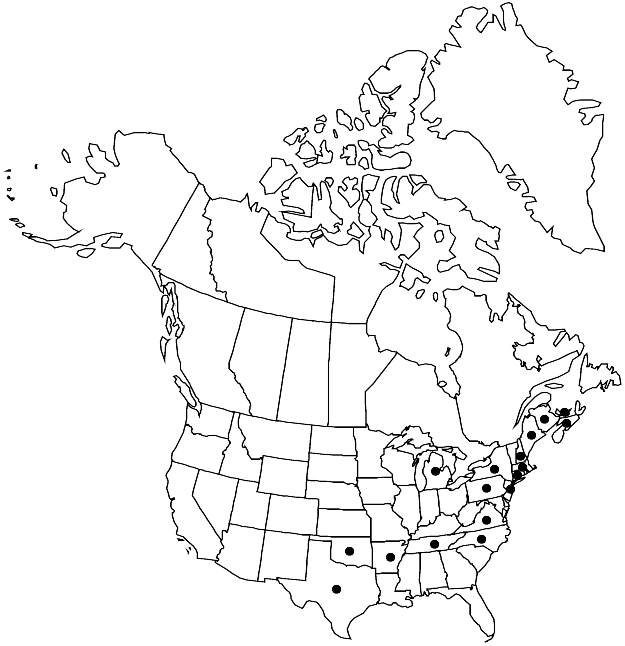Hypnum cupressiforme var. filiforme
Muscol. Recent 2(2): 138. 1801.
Plants small, pale green to dull green, sometimes yellowish. Stems 2–6 cm, creeping, subjulaceous, irregularly branched to somewhat pinnate. Leaves straight to somewhat falcate, oblong-lanceolate, gradually narrowed to apex; margins nearly entire; alar cells many, subquadrate; laminal cells 60–80 × 3–4 µm (or slightly larger). Branch leaves 1–1.4 × 0.2–0.4 mm or slightly smaller.
Phenology: Capsule maturity unknown.
Habitat: Vertical surfaces of cliffs and tree trunks
Elevation: low to high elevations (0-2500 m)
Distribution

N.B., N.S., P.E.I., Ark., Conn., Maine, Mass., Mich., N.H., N.J., N.Y., N.C., Okla., Pa., Tenn., Tex., Va., s South America, Europe, Asia, Africa, Pacific Islands (New Zealand), Australia.
Discussion
When well-developed, var. filiforme is distinctive, with filiform julaceous stems and straight leaves. There are variants with somewhat falcate-secund leaves that can be confused with H. andoi. The latter species has long-attenuate leaf apices, is not julaceous, although filiform, and the leaves are not strongly imbricate as in var. filiforme. The many specimens that closely resemble var. filiforme strongly suggest that it may be an environmental form induced by the habitat that holds moisture rather briefly during the growing season.
Selected References
None.